- ~ Home
- ~ Camino Portugués (The Portuguese Way)
- Camino Portugués Central Route Guide
Jump to Camino Portugués Stages
Camino Portugués Central Route Guide: Highlights & History
Disclosure: the PilgrimageTraveler.com is an associate of Booking.com, Roamless, and Amazon. As associates of these merchants, we earn from qualifying purchases from our links.
Last updated:
Embark on the Camino Portugués Central Route, a journey through Portugal and Spain's combined historic pilgrimage soul. This overview provides standout highlights and defining characteristics, answers many pilgrims’ questions and shares indispensable guidance. It can help you prepare for your own unique and best personal experience possible.
Unlike its coastal cousins, the Central Route immerses you in the authentic Portuguese countryside, weaving through charming villages, serene forests, and richly historic towns that have welcomed pilgrims for centuries. It’s an ancient path steeped in pilgrimage tradition, marked by the footsteps of countless souls who sought connection, reflection, and spiritual growth.
In this article, I will only cover the Portugués Central Route from Porto to Santiago, for those interested in a deeper dive of this section of the pilgrimage. The Portuguese Central Way travels from Porto through Portugal until Tui, when it crosses the Minho River into Spain for the final 100 kilometers.
For more information on the route from Lisbon to Porto, please see my Camino Portugués overview. Click this next link for information about the Coastal Route and Senda Litoral.
For detailed information for each and every stage along this Camino from Porto, please jump to the Camino Portugués Central Route Stages.
“We are all visitors to this time, this place. We are just passing through. Our purpose here is to observe, to learn, to grow, to love… and then to return home.” ~ Australian Aboriginal Proverb
🙋♀️ Why Trust Us at the Pilgrimage Traveler?
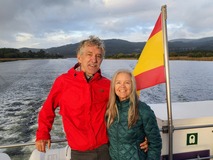
We’re not a travel agency ~ we’re fellow pilgrims! (See About Us)
We've trekked Pilgrimage Routes Across Europe since 2014!
💬 We’ve:
- Gotten lost so you don’t have to. 😉
- Followed waymarks in the glowing sunlight, the pouring rain and by moonlight. ☀️🌧️🌙
- Slept in albergues, hostels & casa rurals. Ate and drank in cafés along the way. 🛌 😴
- Created comprehensive and downloadable GPS maps and eBook Guides, full of must-have information based on real pilgrimage travels. 🧭 🗺️
- Shared our complete journeys, step by step to help YOU plan your ultimate pilgrimage and walk with your own Heart and Soul. 💙✨
Every detail is from our own experiences. Just fellow pilgrims sharing the Way. We have added a touch of spirituality, heartfelt insights and practical guidance from the road ~ offering a genuine connection to the spirit of pilgrimage. Tap into the wisdom of seasoned pilgrims!
Ultreia and Safe Pilgrimage Travels, Caminante! 💫 💚 🤍
How Long is the Central Route?
From Porto to Santiago: Approximately 242 km (150 miles), by my GPS tracks, however, the offical waymark at the beginning says 248 kilometers (154 miles)!
From Lisbon to Santiago: Approximately 617 km (384 miles), requiring 25-30 days.
How Many Days Does it Take to Walk the Central Route?
The Portuguese Central Way will most likely take you 10-14 days. We once completed it in 10 days, walking over 30km on several stages. I am no longer willing to walk that many kilometers, so we now take more time.
If you can plan to have a rest day or two, perhaps an extra day in the vibrant city of Porto and a final one or two in Santiago de Compostela, I would personally budget two weeks. Especially if you are choosing this pilgrimage for the history! Some extra time to absorb the rich heritage in these bustling towns will be very welcome!
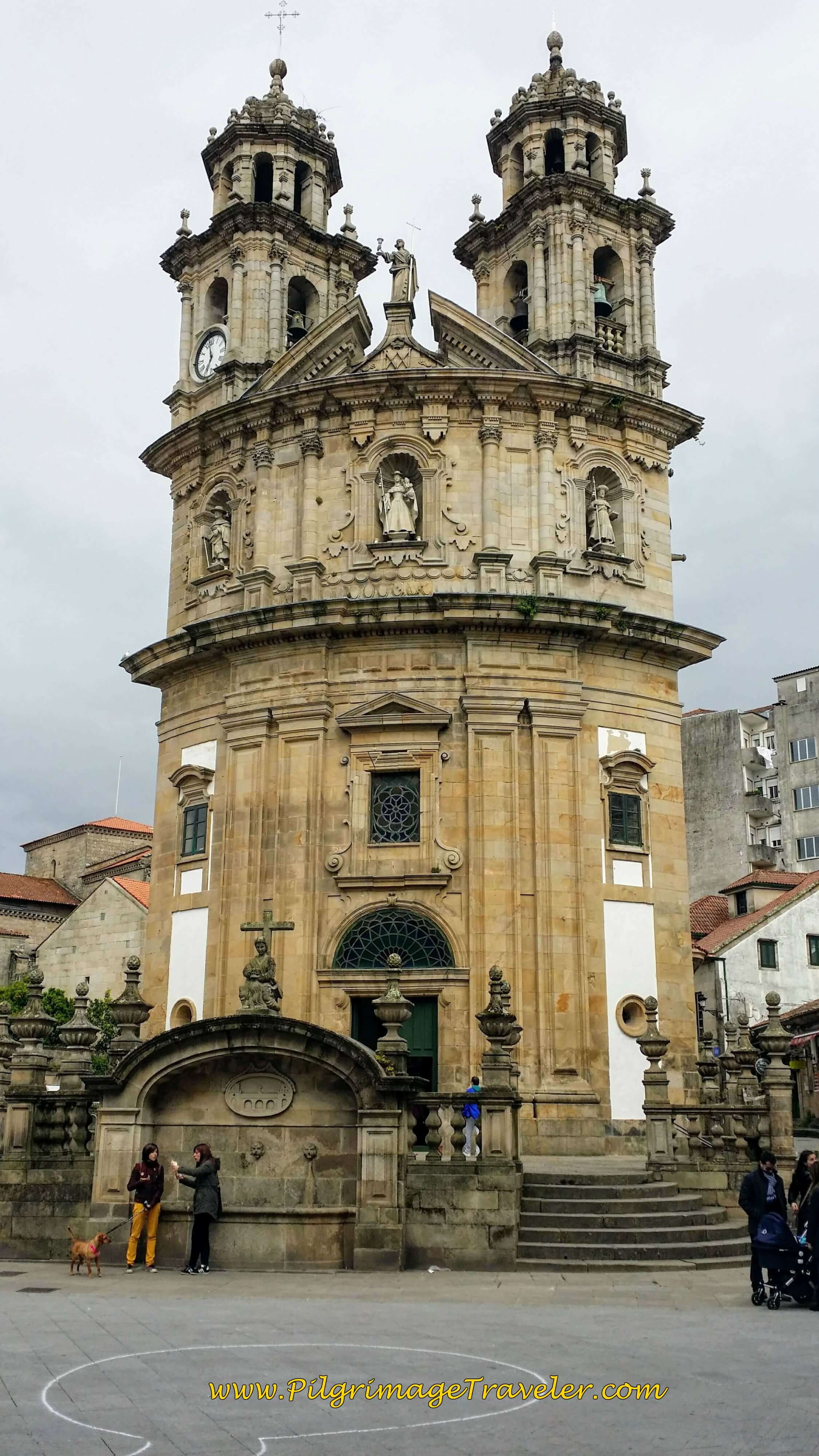 Capela de Virxe Peregrina de Pontevedra, Pilgrim's Chapel in Pontevedra
Capela de Virxe Peregrina de Pontevedra, Pilgrim's Chapel in PontevedraHow Difficult is the Portugués Central Route?
The classic Way from Porto to Santiago de Compostela generally offers pleasant and manageable walking for the average pilgrim. However, note that you will encounter moderate elevation changes. In fact the total elevation gain is 3414 meters (11,200 feet), a substantial amount.
The total elevation loss is 3457 meters (11,342 feet), nearly matching the gain, underscoring the route's rolling terrain. To see the elevation changes of each individual day and a full description of its difficulty, make sure you jump to the Camino Portugués Central Route Stages.
The Central Route, with its gentle ascents and descents add a rewarding challenge and offer beautiful panoramic views of the changing landscape.
For us, the undulations contribute to the authentic feel of the pilgrimage, reminding us that every step forward involves effort and reward. We always feel like true pilgrims of yore walking on Roman roads!
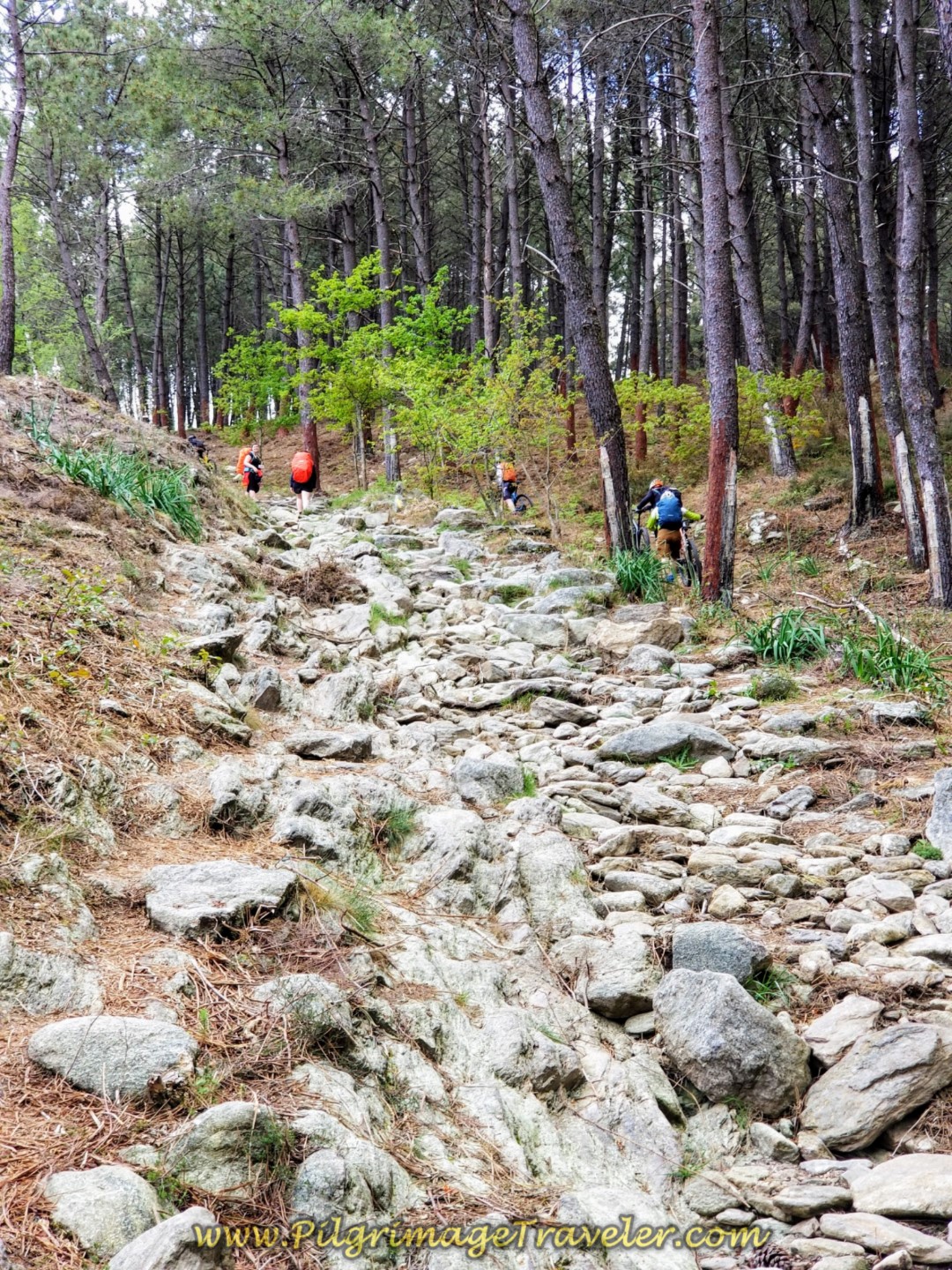 The Walk Up the Alto da Portela Grande on a Roman Road
The Walk Up the Alto da Portela Grande on a Roman RoadOne particular section that stands out for its climb is the ascent to the Alto da Portela Grande de Labruja, after Ponte de Lima on our day eighteen. This is a significant climb for many pilgrims, regarded as one of the more challenging uphill sections on the entire route. It is a climb on ancient Roman roads which only adds to the steepness and difficulty! (The Romans never went around any mountains, just straight up and over!)
It's a stretch that calls for steady resolve but when you reach the top, you’ll feel a deep sense of achievement. Think of the challenge as a physical manifestation of the spiritual journey you're undertaking. Don't worry, however; the views from the top, and the sense of achievement, are well worth the effort!
When is the Best Time of Year to Walk the Central Route?
It is usually recommended to walk on the off-seasons of early spring and late autumn, as this Camino continues to grow in popularity. Not only is the weather more moderate, but the crowds are less. Most pilgrims walk in the high summer months of June, July and August, especially local pilgrims. April and September are often busy, but less so.
Where is the Official Starting Point of the Camino Portugués Central Route in Porto?
For this second half of the Camino Portugués Central Route, the starting point is at a concrete waymark, right in front of the Sé do Porto, the main cathedral on the northern shores of the Douro River in the heart of town. Here is my husband, Rich at the 248 kilometer waymark, below, the first official waymark for this pilgrimage.
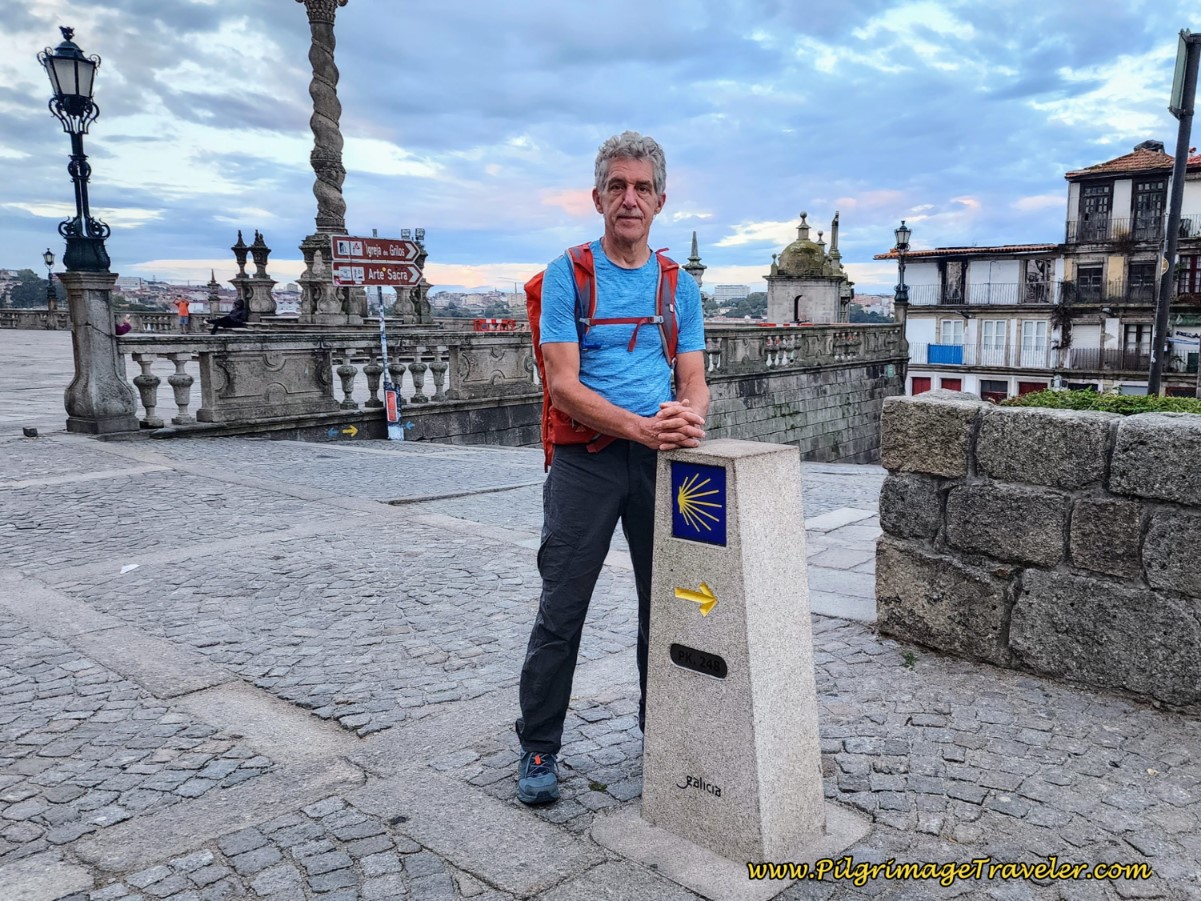 First Concrete Waymark in Front of the Porto Cathedral
First Concrete Waymark in Front of the Porto CathedralThe Central Route shares the same starting point as the Coastal Route and Senda Litoral. The walk initially on the Central and Coastal are shared for several kilometers, but the Senda Litoral goes its own way. To compare the routes out of Porto, see our day fifteen on the Portuguese Way: Senda Litoral.
For the official starting point of the Central Route leaving Lisbon, (not the Sé de Lisboa), click on the link here.
What About the Last 100 Kilometers on the Portuguese Central Way?
This choice is ideal for time-limited pilgrims or first-timers who wish to try out a Camino to see if it is right for them. 100 kilometers is the least amount of walking that you must document to receive a Compostela (click on the link for the official rules from the Pilgrim's Office). You must stamp your credential at least twice a day to qualify.
The new rules no longer require the last 100 kilometers of a pilgrimage, but any continuous 100 kilometers along any Camino de Santiago, as long as the last stage is into Santiago!
I know this is rather confusing, however, most pilgrims continue to choose the last 100 kilometers of the Central Route anyway. Most often they start their 100 km Camino in Tui, Spain at the Catedral Santa María de Tui.
However, Tui is approximately 117 kilometers from the cathedral to Santiago de Compostela. But because the town and the cathedral is an incredibly beautiful place to visit, most pilgrims choose to start here.
The city of Tui is right across the Minho River to the north, from Valença, Portugal. The cathedral looms above the river, if you are walking on the Camino from the south ~ a very impressive sight to behold!
If you choose the 100 km option, you will miss the Portuguese part of this Camino. My recommendation would be at least to cross the river south into Portugal and go see Valença. It is a historic, fortified town with battlements that loom above the Minho River. In my view it has a quainter downtown, if somewhat more of a touristy feel than Tui.
However, both towns are wonderful to visit. For more incredible photos of these two towns, go to our day nineteen!
The actual last 100 kilometers is closer to O Porriño, 17 kilometers north of Tui and about a day's walk away. While there is no actual, exact 100 kilometer waymark, about 2.3 kilometers north of the center of O Porriño, there is a 100.221 concrete waymark.
The 100.221 kilometer waymark is just after a turn to the right, along a wall made of tires, just before the Albergue Santa Ana de Veigadaña, see photo below.
The pilgrim's office in Santiago will grant the Compostela if you start in O Porriño, for the final 100 kilometers. Some have suggested that you take a photo of yourself at this 100.221 kilometer waymark to prove you have walked the full kilometers, if you don't start in the more commonly known beginning in Tui.
Here is a photo of the waymark. Look the for the wooden sign waymark and the wall of tires at the turn! You can see there is a yellow 100 → on a tire as well.
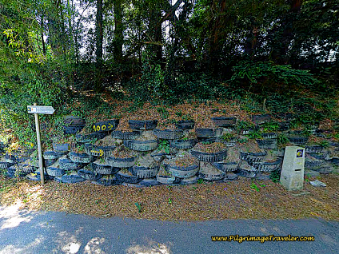 Tirewall and 100 Km Waymark
Tirewall and 100 Km WaymarkJump to the Camino Portugués Central Route Stages
👣 Camino Portugués eBook Guides
Enjoy all the valuable info from our web pages ~ offline, ad-free, and beautifully formatted, including our photos. Why carry a heavy guidebook when you can use a nimble digital version on your device?
Our guides are frequently updated and uniquely entertaining, as we share our own Camino story along the way.
📲 Instant download. 💸 Money-back guarantee. 🔄 Free updates for 1 year.
Buy only what you need ~ or grab all four for the price of three (25% savings). Click here for more information or BUY NOW at only 17.85!
What are the Accommodations Like on the Central Portuguese Way?
There are many types of accommodations along this Portuguese Camino. Likewise, other amenities are plentiful like supermarkets, tiendas (small stores), café-bars and restaurants.
As far as accommodations, from least expensive:
- Albergues/Refugios: specific for pilgrims that are run by donation (called a donativo) or a small charge, operated by a local parish or monastery (Parochial). You must supply your own bedding. Breakfast and even dinner may be supplied, also for a donation or a charge. Donativos are not free services but are designed to provide the most authentic pilgrim experience. Donate generously to these organizations/individuals.
- Municipal Albergues, "Munis" (hostal/shared dormitory-type accommodation): operated by the local municipality which are usually 10 Euros/per person/per night. You must provide your own bedding, in addition to their disposible sheet/pillowcase. Some offer blankets, some do not, and they may be of questionable cleanliness. Breakfast is never included. If it is important to you to economize, see our map below with the munis and the parochial albergues in orange. They are spaced appropriately so that you can stay exclusively in this type of accommodation.
- Private Albergues (Privados): These are more upscale, usually offering real sheets, towels, pillows and blankets. Breakfast may be included, or for an additional charge. Often the rooms are smaller with fewer bunk beds and may even offer female-only dormitories.
- Family-run, smaller Hotel-Type, usually friendly establishments: Often very economical, especially for a couple, most often breakfast is included, and will have full bedding provided. This is where Rich and I stay the most since we walk so many Caminos and are getting up there in age/privacy preferences! But we do like the private albergues, and the occasional muni to keep the pilgrim spirit alive!
- Casa Rurales (Rural Homes): These are homes turned into upscale tourist accommodations. They often have access to a kitchen for cooking, may include breakfast and may have a pool or other luxuries that are not common in pilgrim accommodations.
- Paradores: These luxury hotels are unique to Spain, are often in castles and monasteries and are only found in Tui, Pontevedra and Santiago de Compostela along this route.
Jump to the Camino Portugués Central Route Stages
🌍 Map of the Camino Portugués Central Route with Amenities
Here is our comprehensive and interactive map of the route, with many amenities placed on it! You can use it as a maps-only guide. For our direct sharing link, of this map, click here.
New to using GPS maps? We got you covered here: How to download the map, How to upload the map to a personal device, and How to use the map offline.
How Flexible Are the Stages on the Central Route?
This pilgrimage path may be the easiest of the Portuguese routes to plan, with remarkable flexibility. Because of this, you can also make your stages shorter if desired.
The traditional stages are well-established, often breaking down the journey into manageable daily walks of around 20-25 kilometers (12-15 miles).
As noted above, it has a good network of albergues, private accommodations, and all services along the way, so you have the freedom to adjust your daily distances to suit your pace, energy levels, and personal preferences.
Whether you prefer shorter days to savor every moment or longer stretches to cover more ground, this route accommodates a variety of walking styles. This flexibility allows each pilgrim to truly tailor their journey, listening to their own body and spirit.
What Makes the Camino Portugués Central Route Historically Significant?
From the moment you step out of the magnificent Porto Cathedral, you’re on a path alive with stories. The Camino Portugués is renowned for its profound historical significance, passing through cities that were once (and still are) pivotal centers of trade and culture.
Imagine walking the Roman roads that still form parts of the Camino, feeling the echoes of ancient travelers beneath your feet. I love walking on these ancient roads ~ I truly feel like an old-time pilgrim! And there are many of them on this particular Way!
You'll encounter magnificent churches, many small chapels, that I call Pilgrim's chapels, ancient monasteries, and medieval bridges that stand as testaments to faith and enduring human spirit.
Places like Barcelos, with its legendary rooster, Ponte de Lima, home to one of Portugal's oldest bridges, Valença (my personal favorite) with its medieval battlements and Tui, with its imposing cathedral guarding the border, aren't just stops ~ they're living chapters in a grand historical narrative.
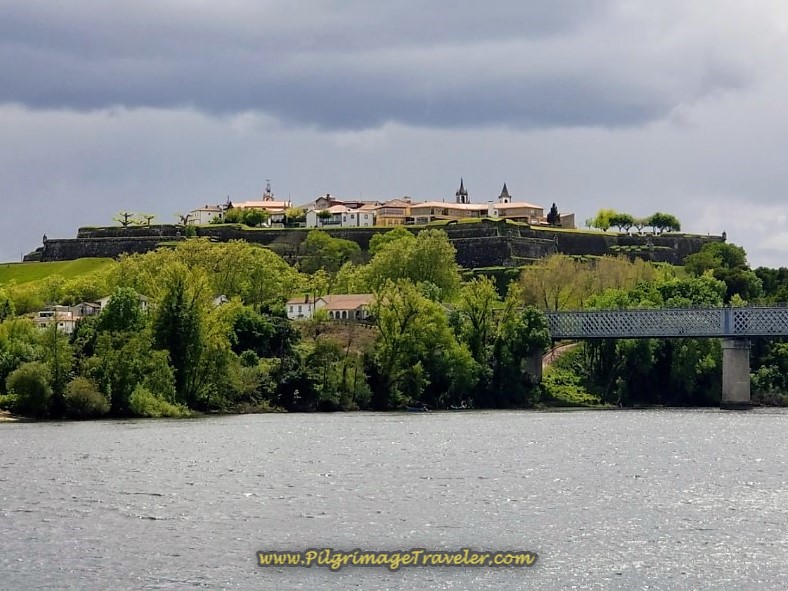 The Battlements of Valença, Portugal as seen from Tui, Spain
The Battlements of Valença, Portugal as seen from Tui, SpainFor the pilgrim, these historic features offer more than just sightseeing. Each ancient stone, each weathered church, each quiet chapel invites a deeper reflection. I make it a practice to briefly pause at each and every chapel or shrine along the way and offer a prayer of gratitude for my health, the journey and all this pilgrimage has to offer me.
The Camino de Santiago, especially on this particular Way is a chance to connect with a timeless tradition, to understand the dedication of those who walked before us, those currently on the path and all those to come after us. The spiritual "residual" here is very strong indeed.
The path is only a metaphorical terrestrial roadmap to find your own place within this continuous spiritual journey. The Central Route truly offers a journey of the soul, connecting you not just to the landscape, but to yourself, and to a profound sense of continuity and shared human experience. This is the essence of pilgrimage.
Jump to the Camino Portugués Central Route Stages
What Are the Key Landscape Highlights of the Central Route?
Beyond its historical towns, the Camino Portugués pilgrimage path unfolds through a stunning variety of landscapes that truly capture the essence of rural Portugal and Galicia.
You'll find yourself walking amidst picturesque vineyards, especially as you leave the Porto region, where the grapes for Portugal's famous Vinho Verde flourish. The rolling countryside is a constant companion, dotted with small farms, oak and eucalyptus groves, and verdant fields that invite quiet reflection.
These natural settings provide moments of peace and natural beauty, offering a gentle counterpoint to the historical towns. The scent of eucalyptus, the rustle of leaves, and the chirping of birds create a serene backdrop for your journey, inviting you to slow down, breathe deeply, and truly be present in the moment.
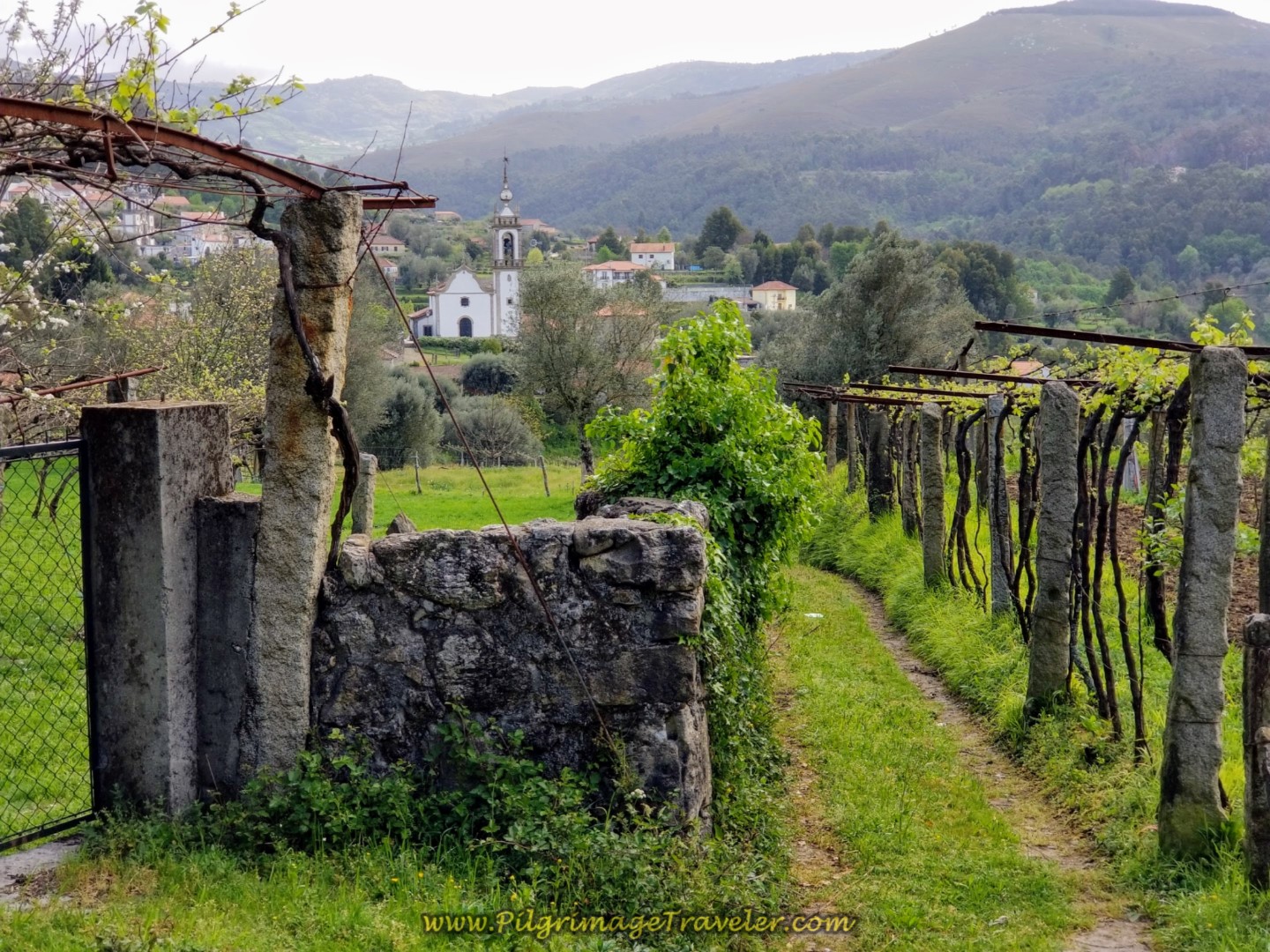 Verdant view of Labruja, Portugal
Verdant view of Labruja, PortugalWhere Can I Find More Detailed Information About the Central Route?
I hope you will use this guide as your starting point, to prepare for an adventurous and deeply personal journey of a lifetime.
For more detailed information on what to expect each and every, including specific distances, points of interest, and accommodation tips, be sure to check out our individual day-by-day articles right here. 👇 Just scroll below to see each stage.
And if you like a detailed comparison of Portuguese routes after Porto, click here: Central Route vs Coastal Route vs Senda Litoral Route.
Or, if you want to do a portion of both, see how you can crossover from the Coastal Route to the Central, by jumping to my crossover explanation.
Salutation
The Camino Portugués Central Route is more than just a path; it's an invitation to a deeply personal and enriching adventure. It offers a blend of natural beauty, pilgrim connections, historical immersion, and quiet spiritual reflection. Each offers the chance to inspire and transform you.
As the opening Aboriginal quote states, even though you may be just passing through, may your visit to this time and this place be "full of purpose: to observe, to learn, to grow, to love… and then to return home."
Camino Portugués Overview
Camino Portugués Stages
Central Route: Lisbon to Porto Stages
Central Route: Porto to Santiago Stages
Senda Litoral or the Coastal Routes: Porto to Santiago Stages
Skip to Central Route Above, for Final Days 22-25 to Santiago
Variante Espiritual Stages
Please Consider Showing Your Support
Many readers contact me, Elle, to thank me for all the time and care that I have spent creating this informative website. If you have been truly blessed by my efforts, have not purchased an eBook, yet wish to contribute, I am exeedingly grateful. Thank you!
Search This Website:
🙋♀️ Why Trust Us at the Pilgrimage Traveler?

We’re not a travel agency ~ we’re fellow pilgrims! (See About Us)
We've trekked Pilgrimage Routes Across Europe since 2014!
💬 We’ve:
- Gotten lost so you don’t have to. 😉
- Followed waymarks in the glowing sunlight, the pouring rain and by moonlight. ☀️🌧️🌙
- Slept in albergues, hostels & casa rurals. Ate and drank in cafés along the way. 🛌 😴
- Created comprehensive and downloadable GPS maps and eBook Guides, full of must-have information based on real pilgrimage travels. 🧭 🗺️
- Shared our complete journeys, step by step to help YOU plan your ultimate pilgrimage and walk with your own Heart and Soul. 💙✨
Every detail is from our own experiences. Just fellow pilgrims sharing the Way. We have added a touch of spirituality, heartfelt insights and practical guidance from the road ~ offering a genuine connection to the spirit of pilgrimage. Tap into the wisdom of seasoned pilgrims!
Ultreia and Safe Pilgrimage Travels, Caminante! 💫 💚 🤍
Follow Me on Pinterest:
Find the Pilgrimage Traveler on Facebook:
Like / Share this page on Facebook:
***All Banners, Amazon, Roamless and Booking.com links on this website are affiliate links. As an Amazon associate and a Booking.com associate, the Pilgrimage Traveler website will earn from qualifying purchases when you click on these links, at no cost to you. We sincerely thank you as this is a pilgrim-supported website***
PS: Our eBook Guide books are of our own creation and we appreciate your purchase of those too!!
Shroud Yourself in Mystery, along the Via de Francesco!
Walk in the Footsteps of St. Francis, and Connect Deeply to the Saint and to Nature in the Marvelous Italian Countryside!
Need suggestions on what to pack for your next pilgrimage? Click Here or on the photo below!
Find the Best Hotel Deals Using This Tool!
Carbon Trekking Poles ~ My Favorites!
Carbon fiber construction (not aluminum) in a trekking pole makes them ultra lightweight. We like the Z-Pole style from Black Diamond so we can hide our poles in our pack from potential thieves before getting to our albergue! There are many to choose from! (See more of our gear recommendations! )
Gregory BackPack ~ My Favorite Brand
Do not forget your quick-dry microfiber towel!
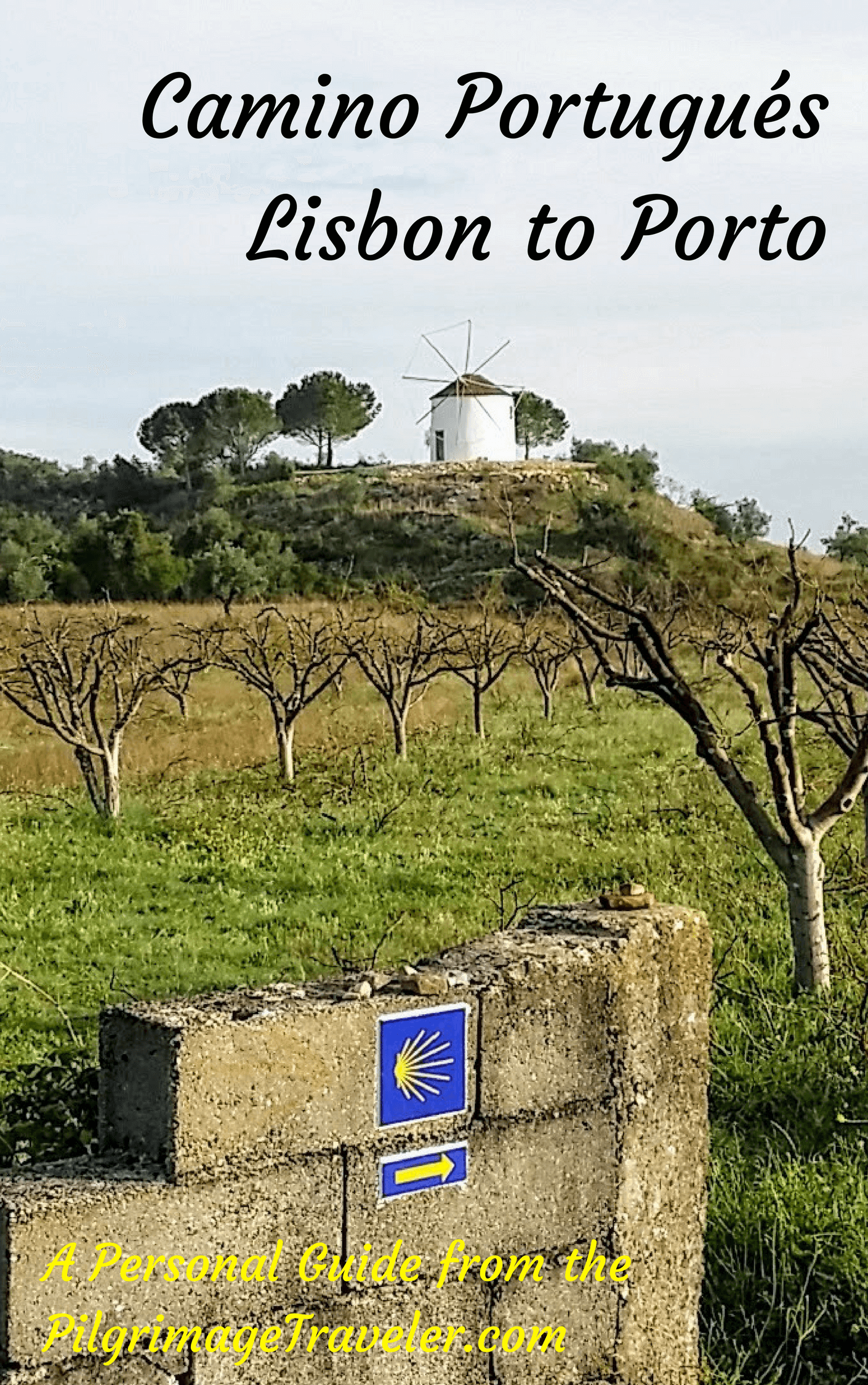
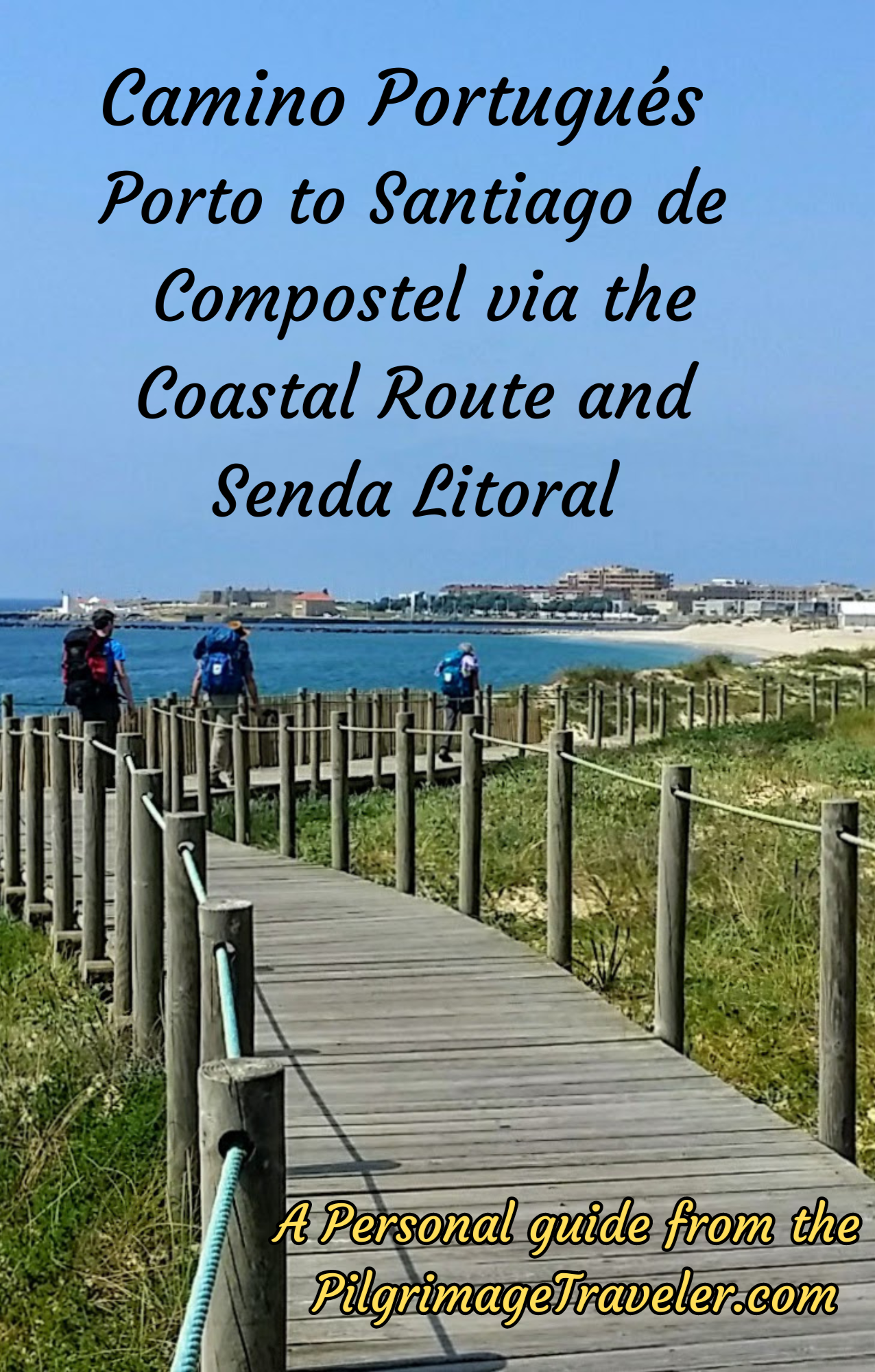
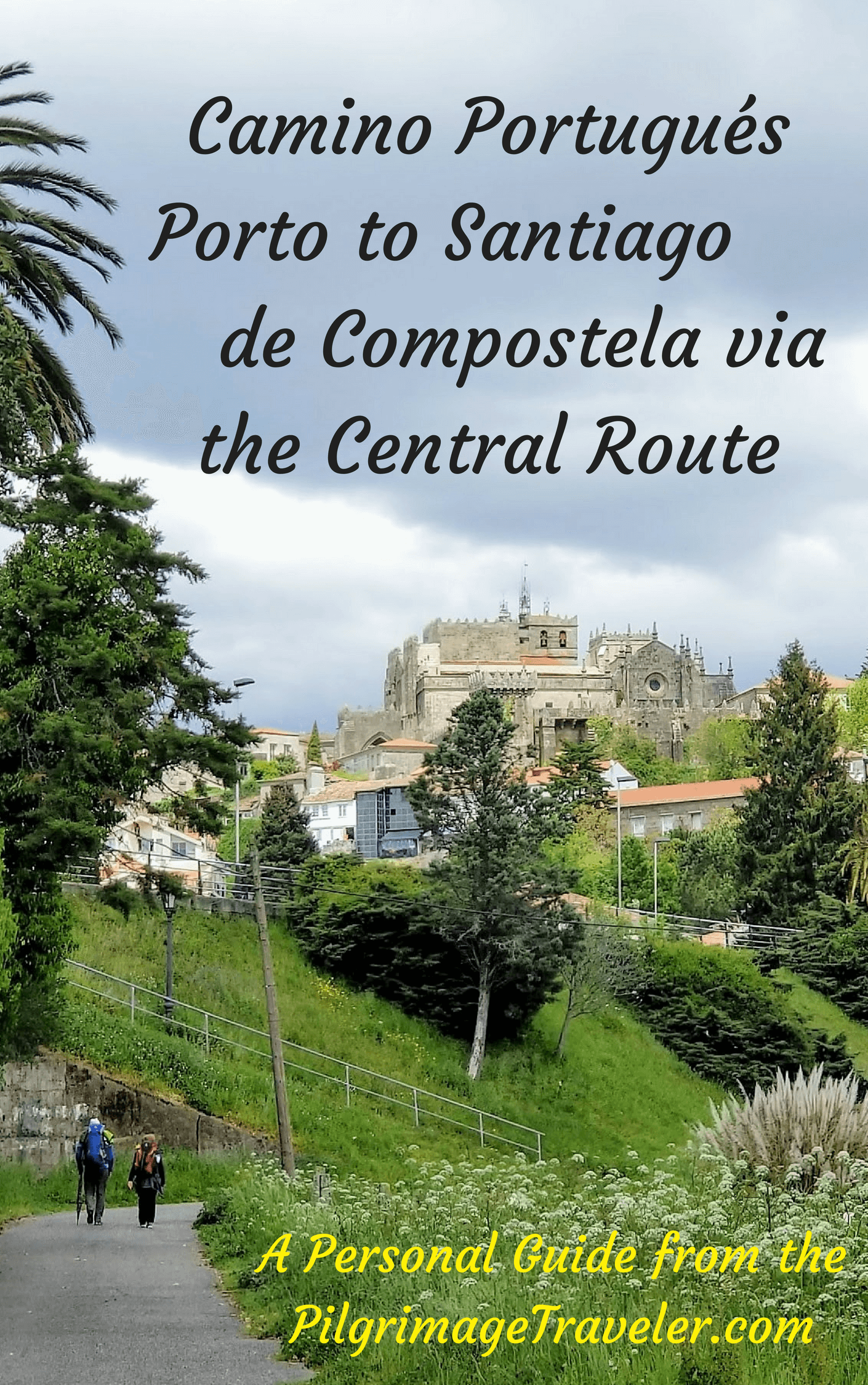
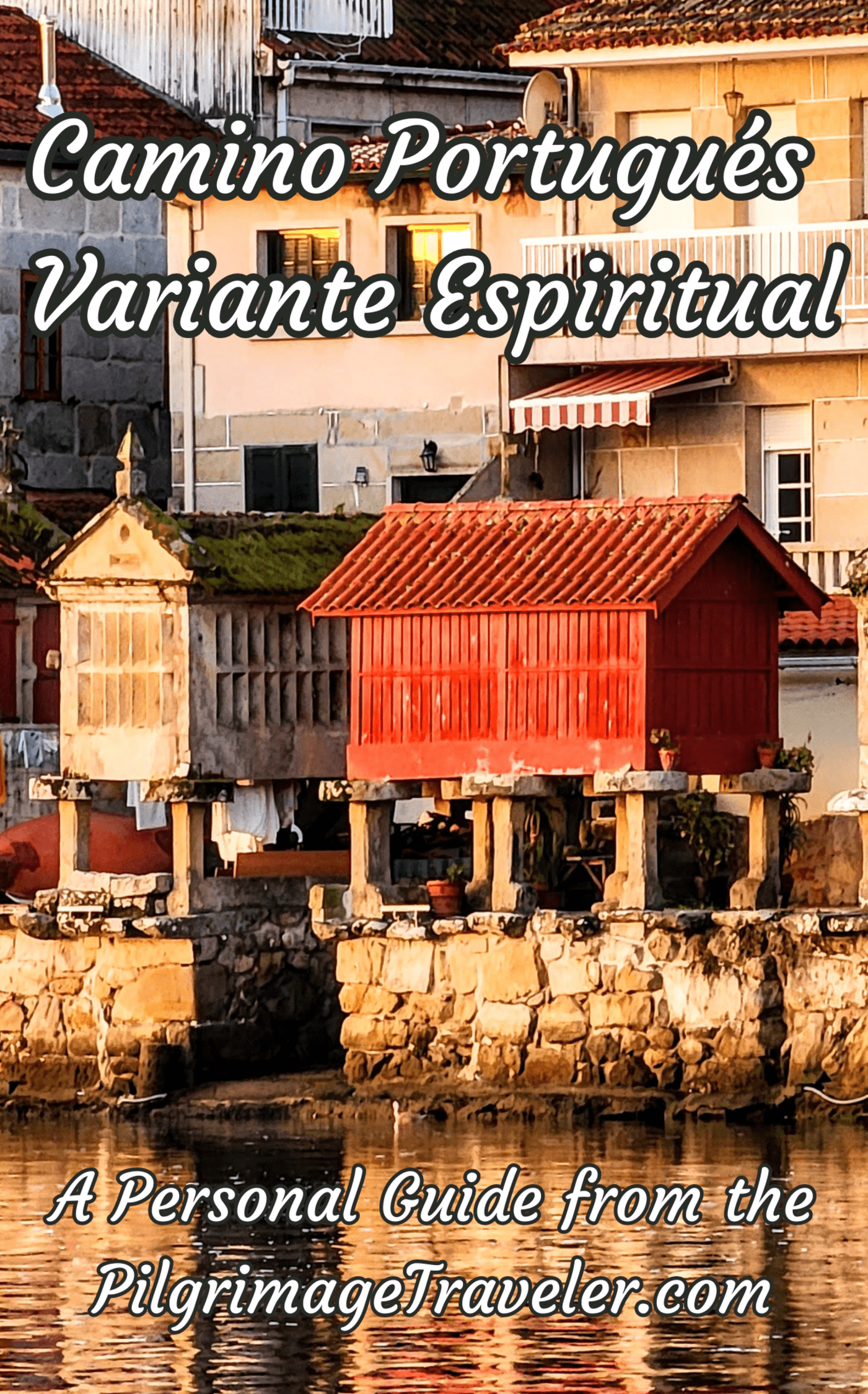





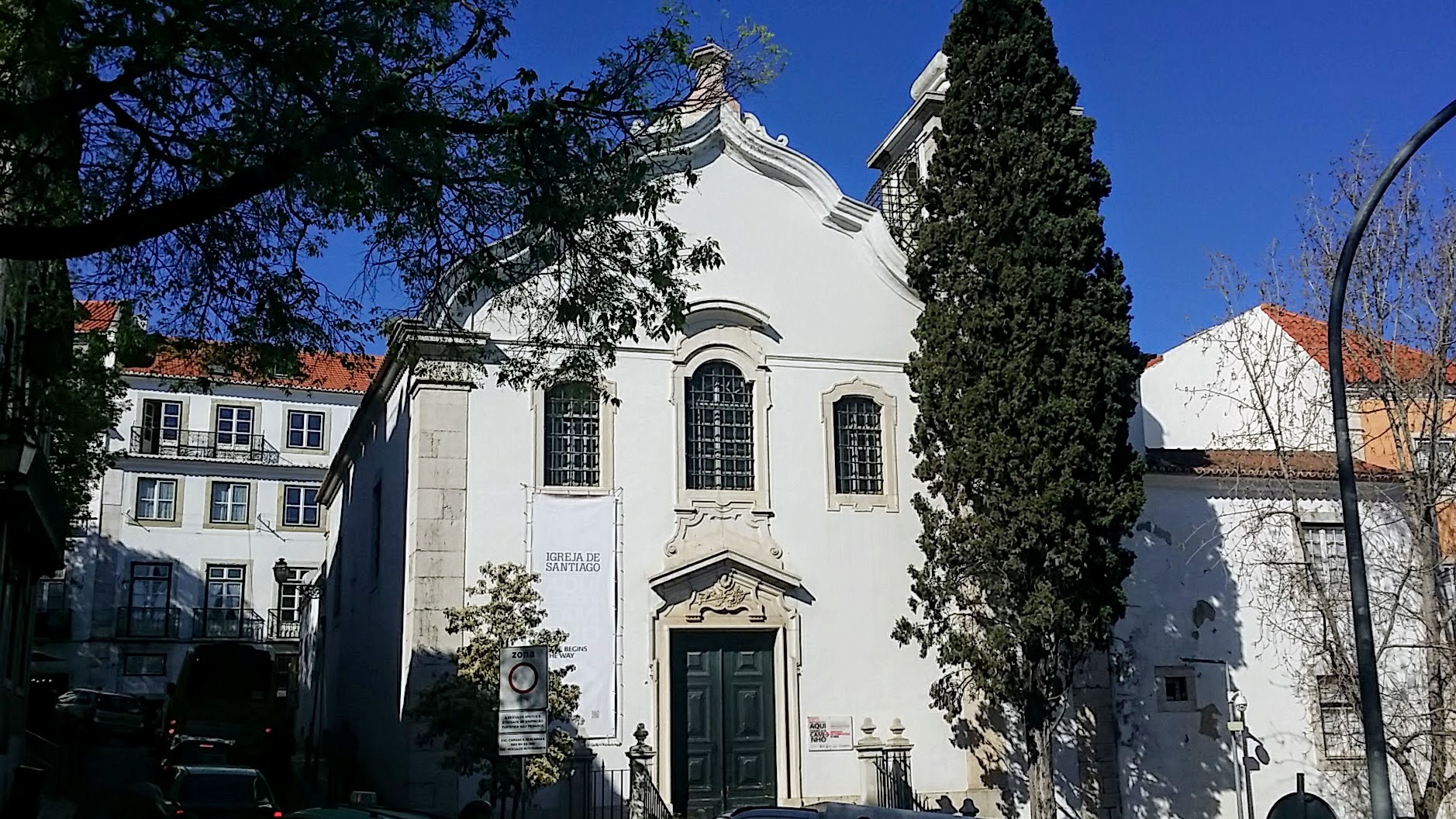

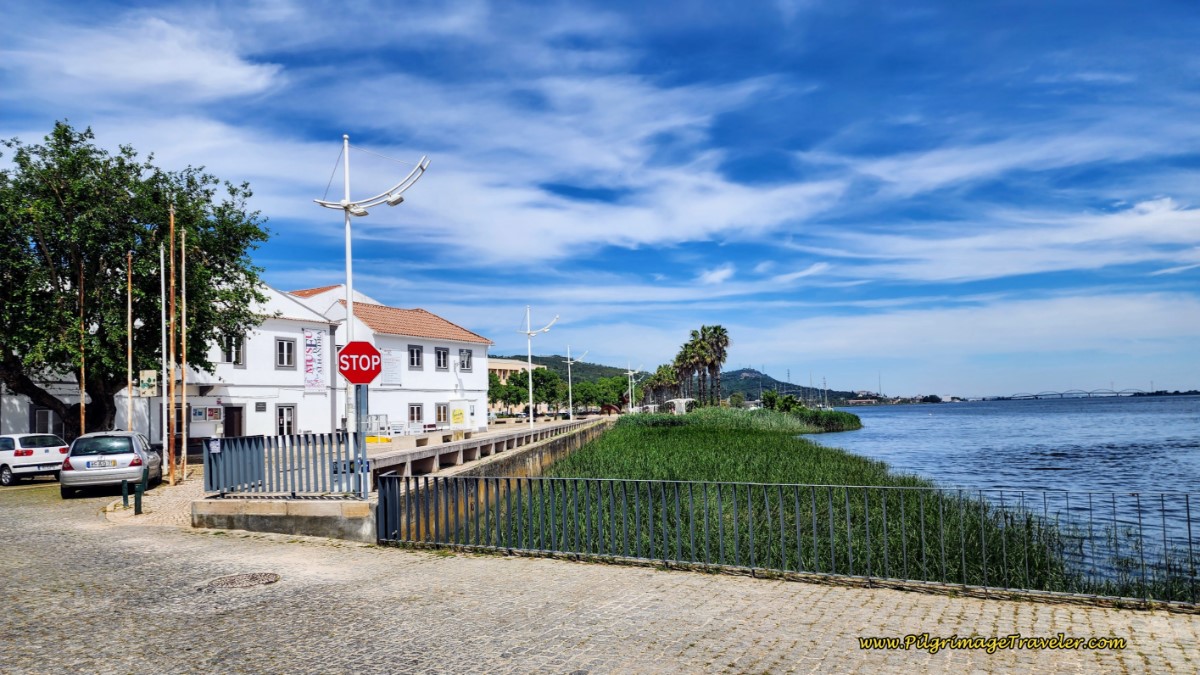









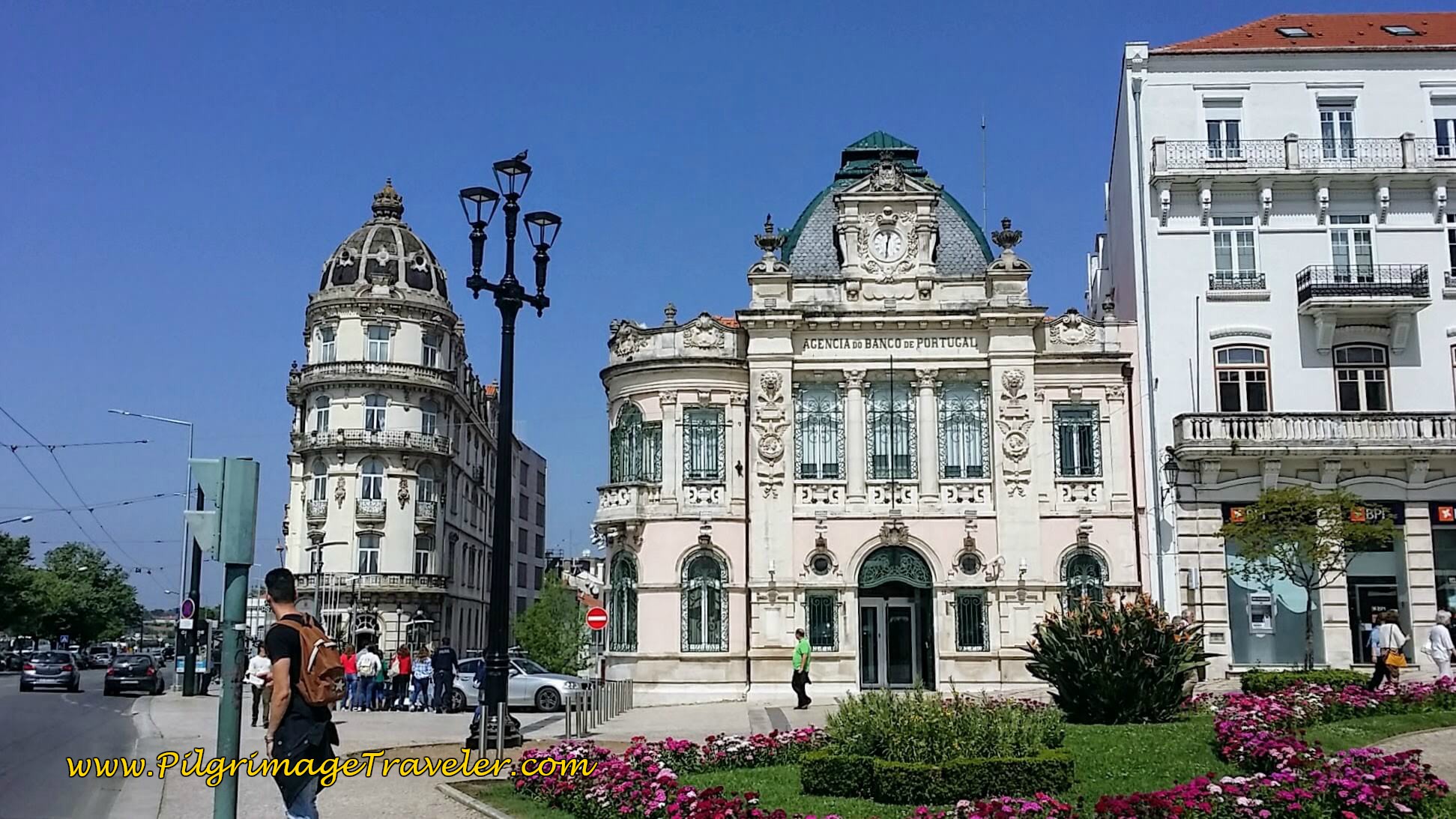






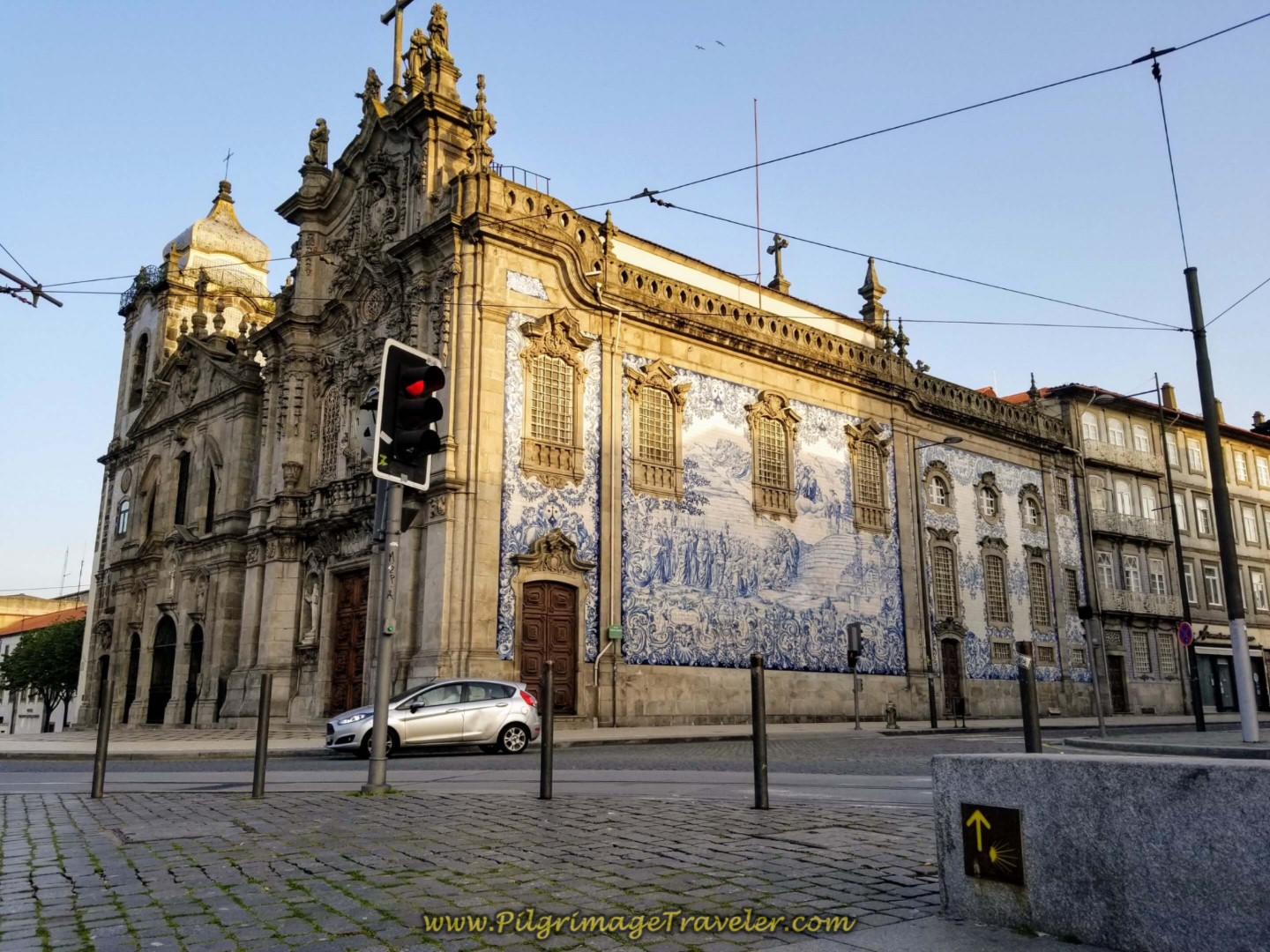








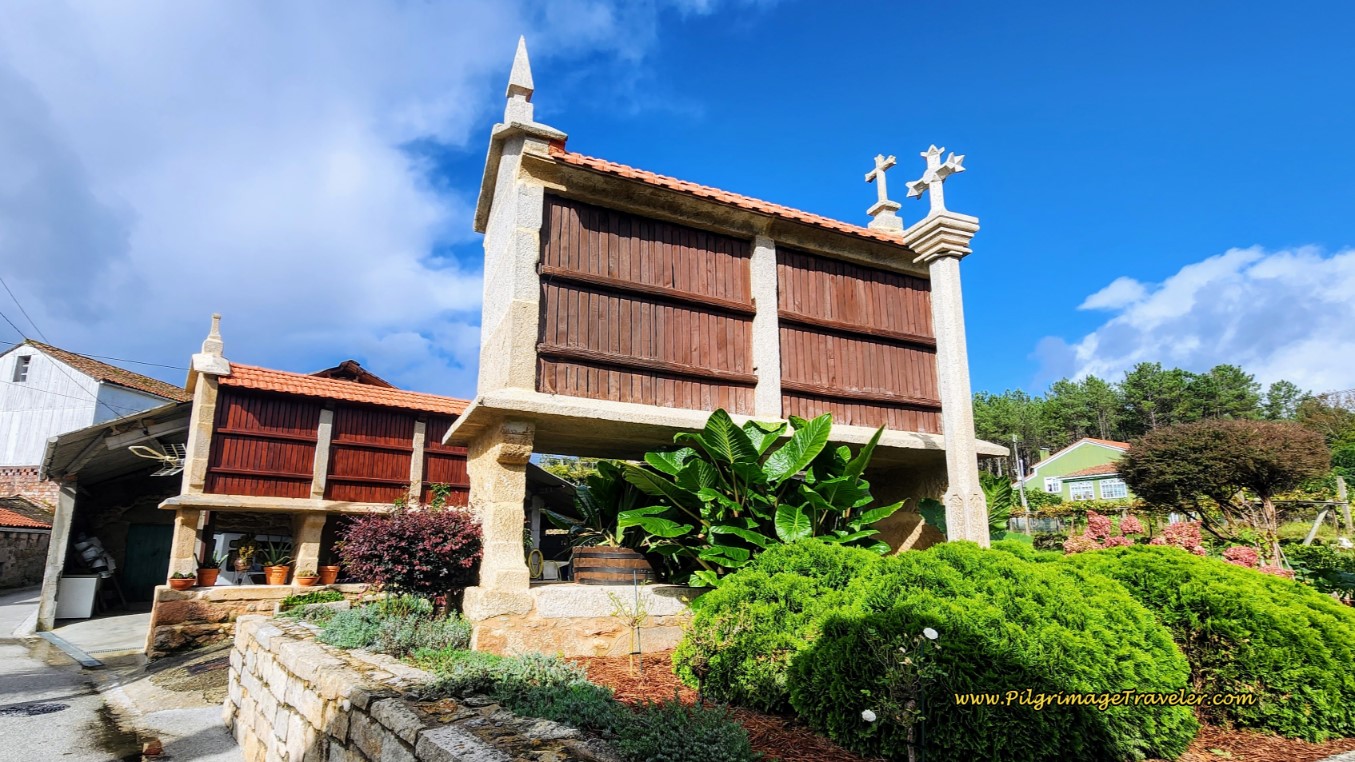

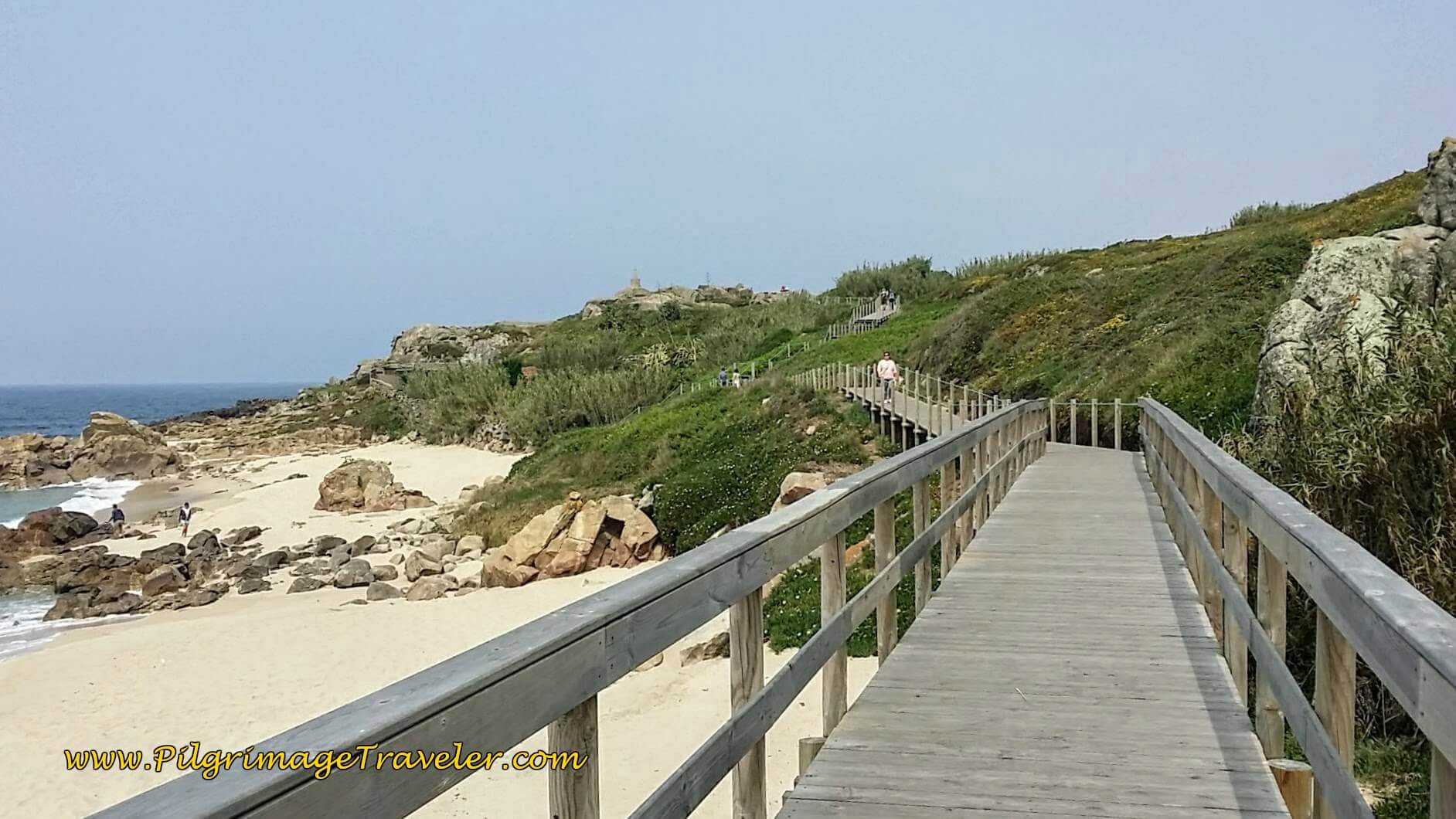

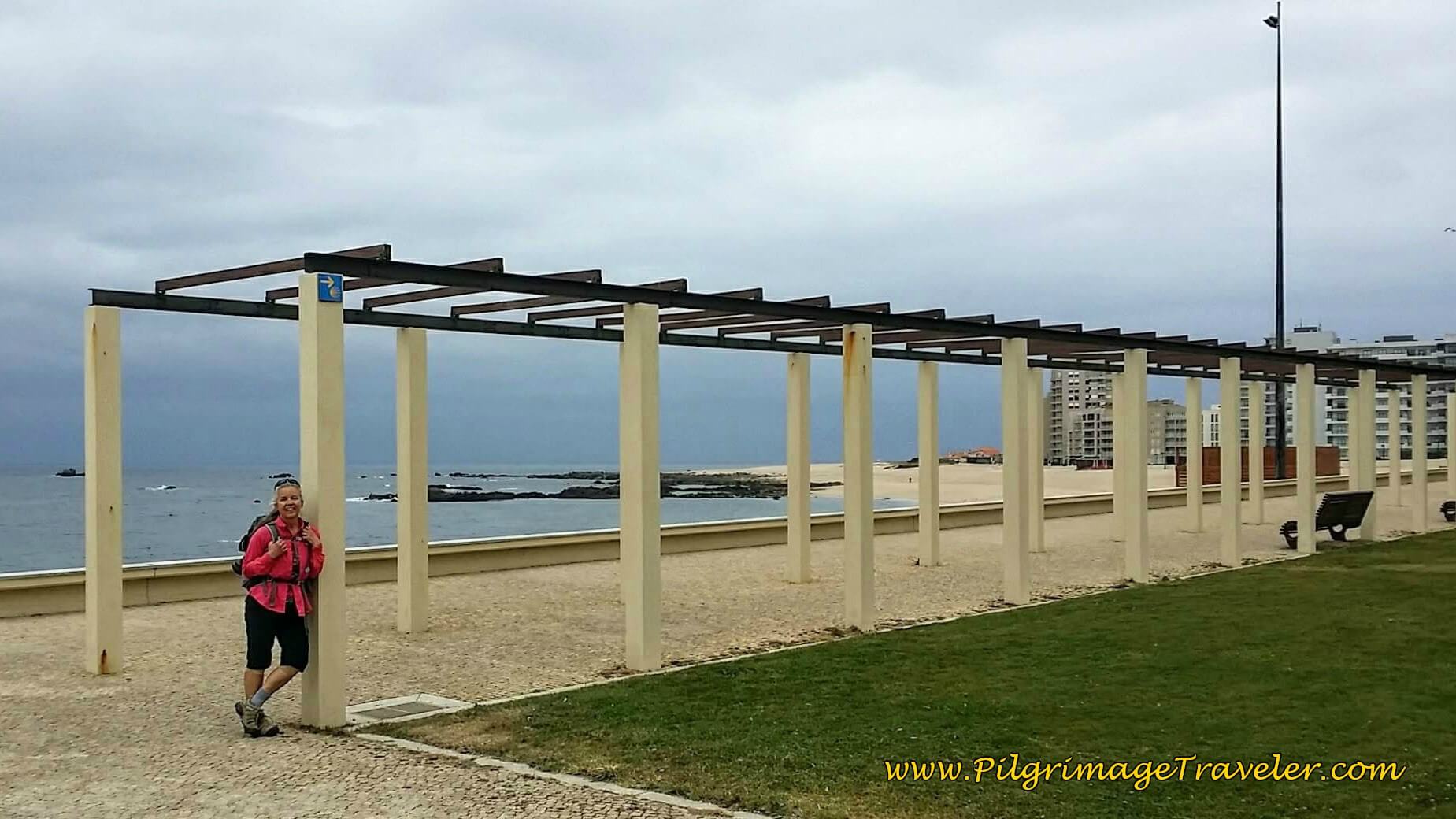

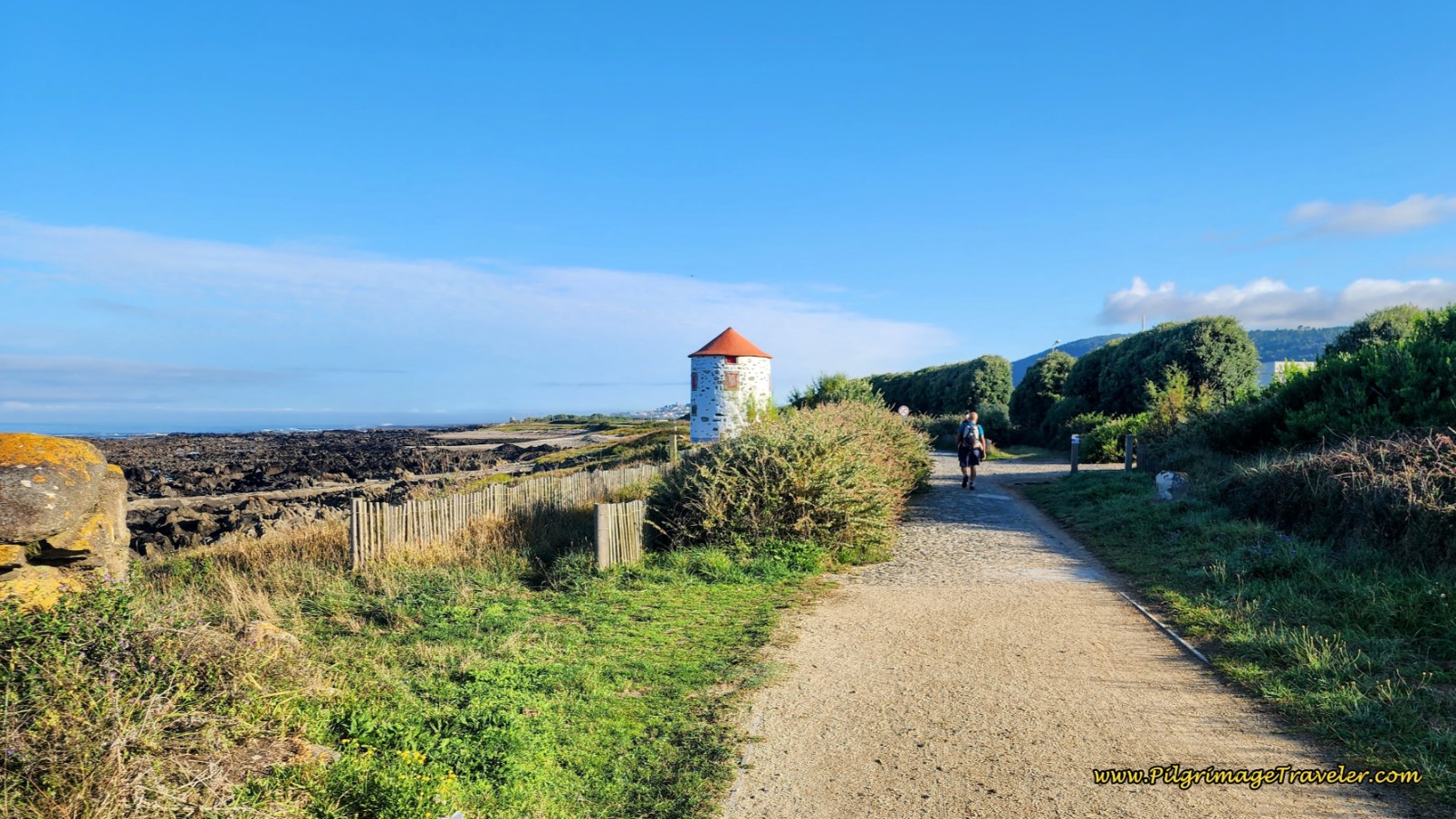









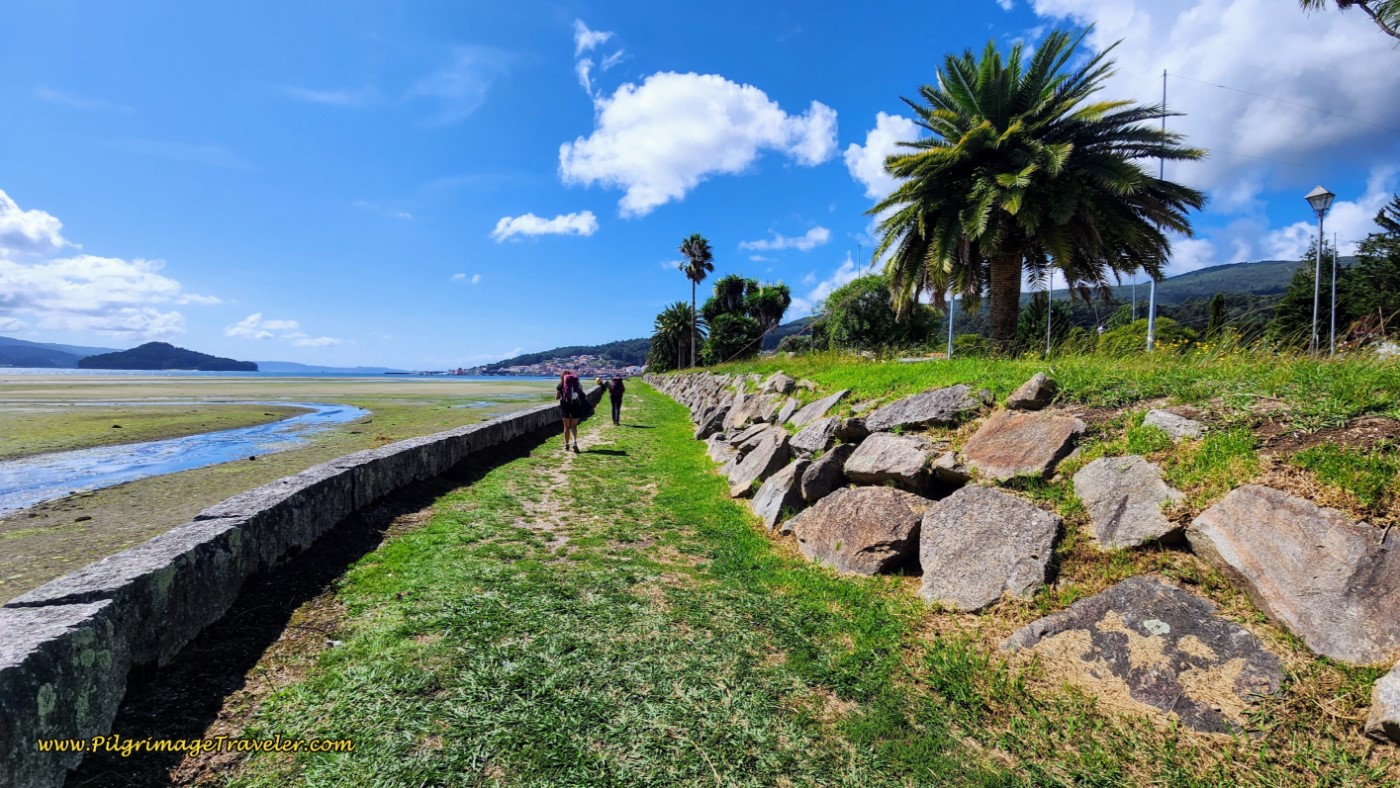
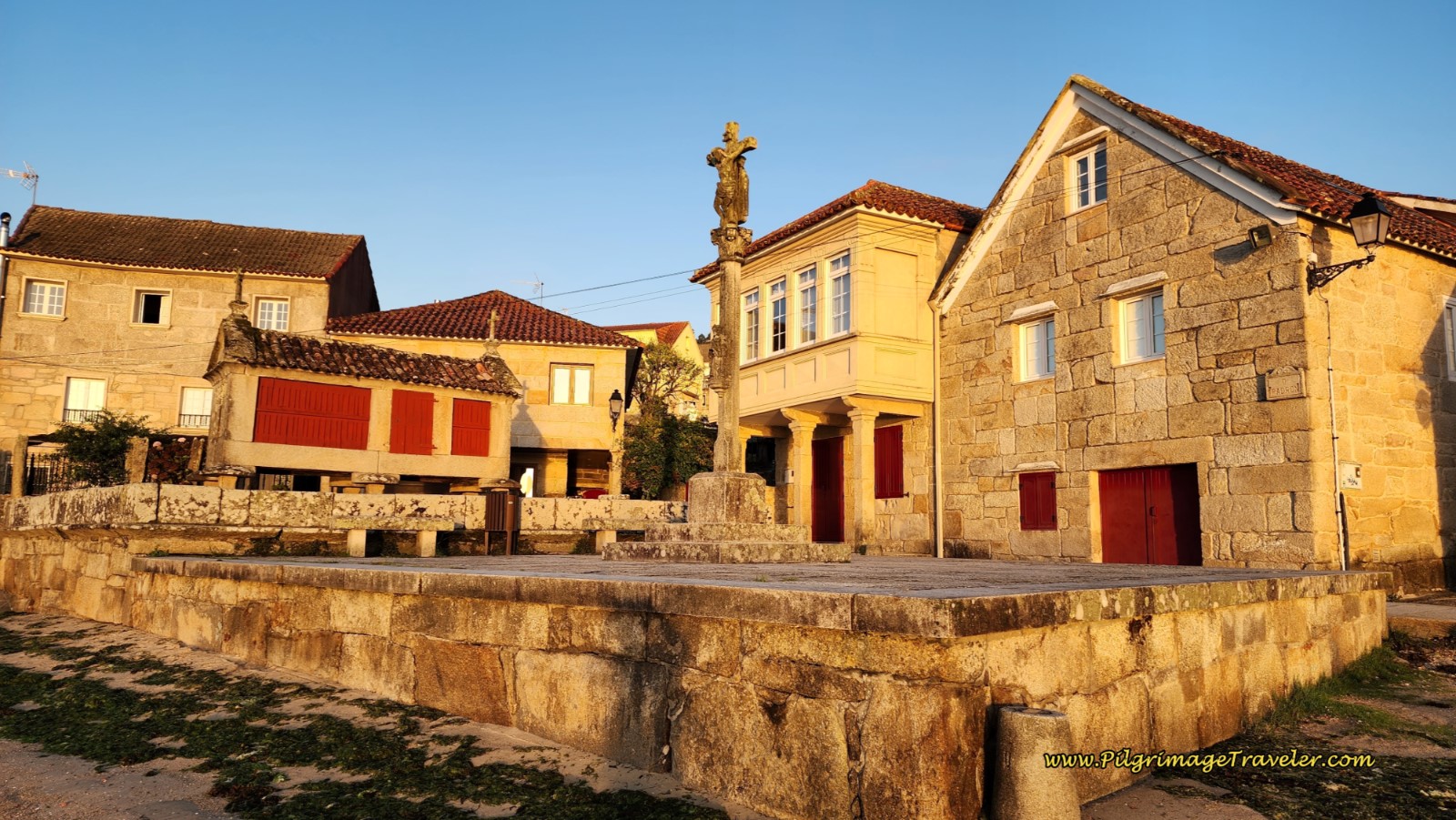




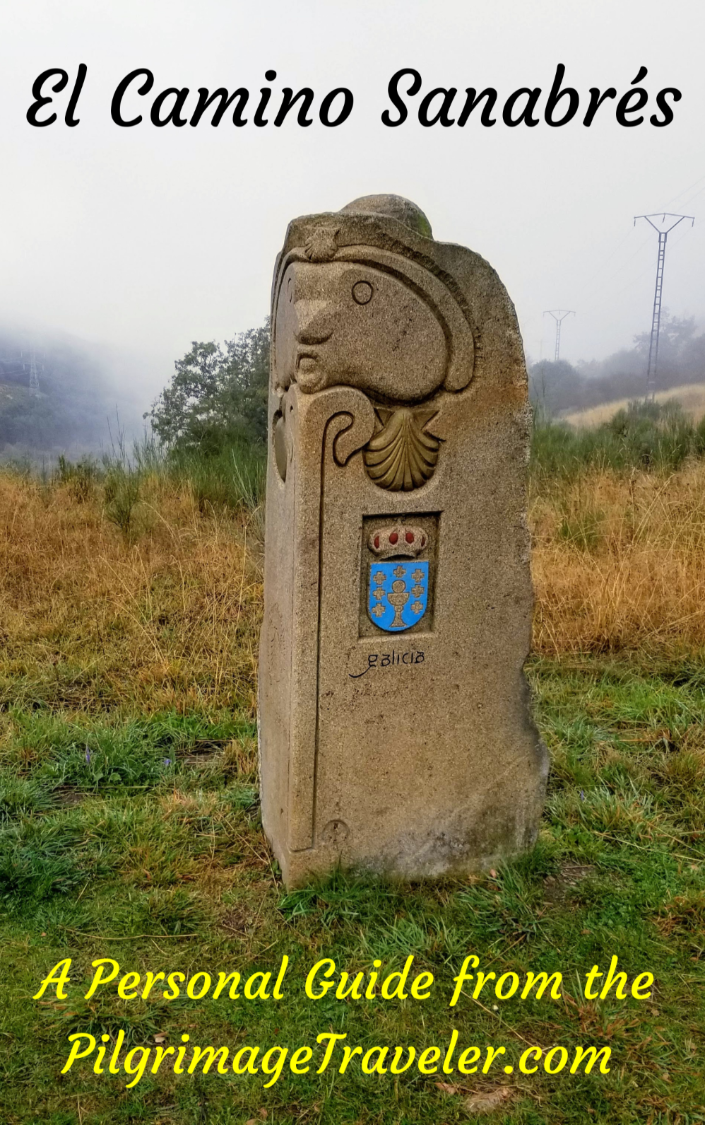
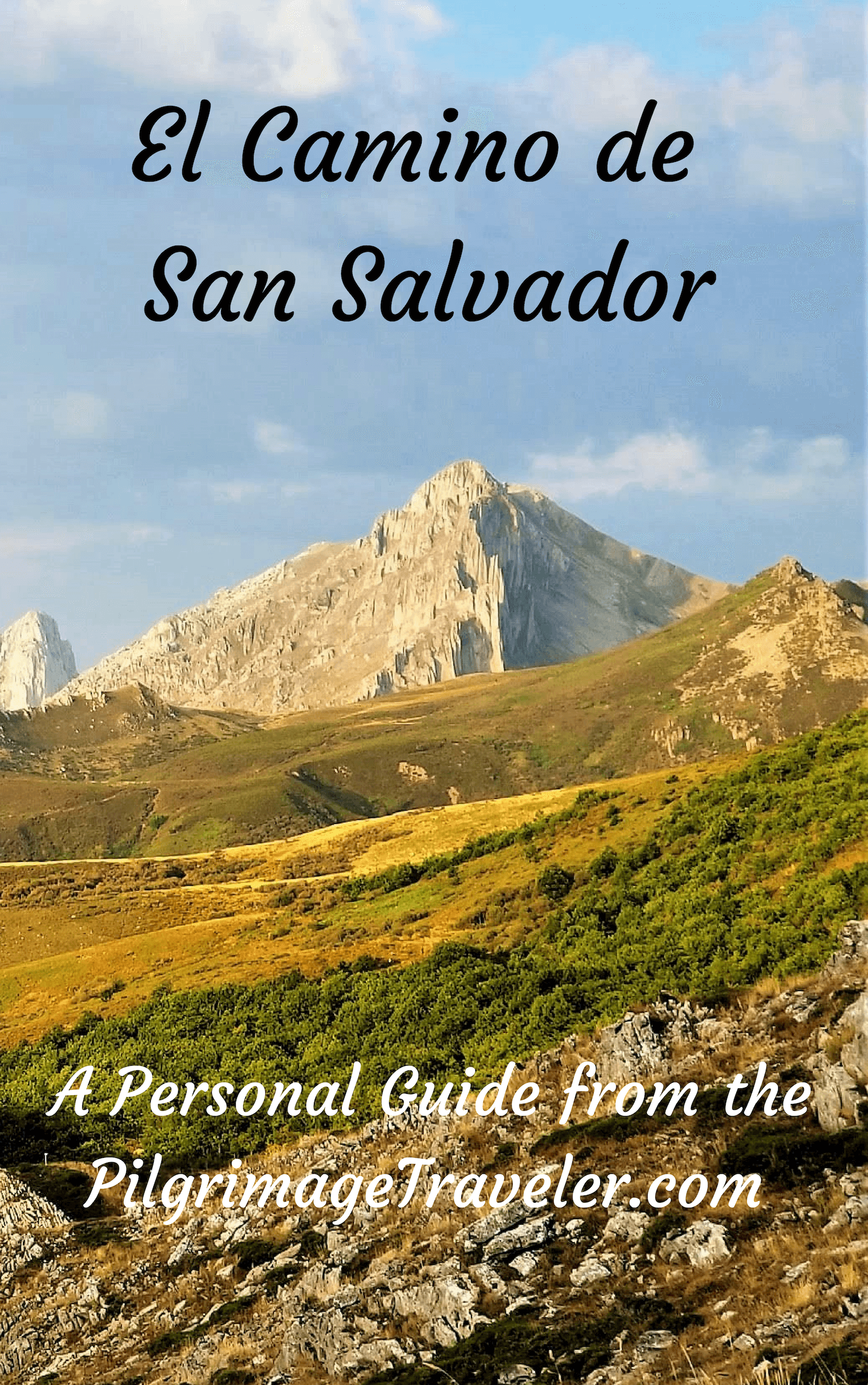
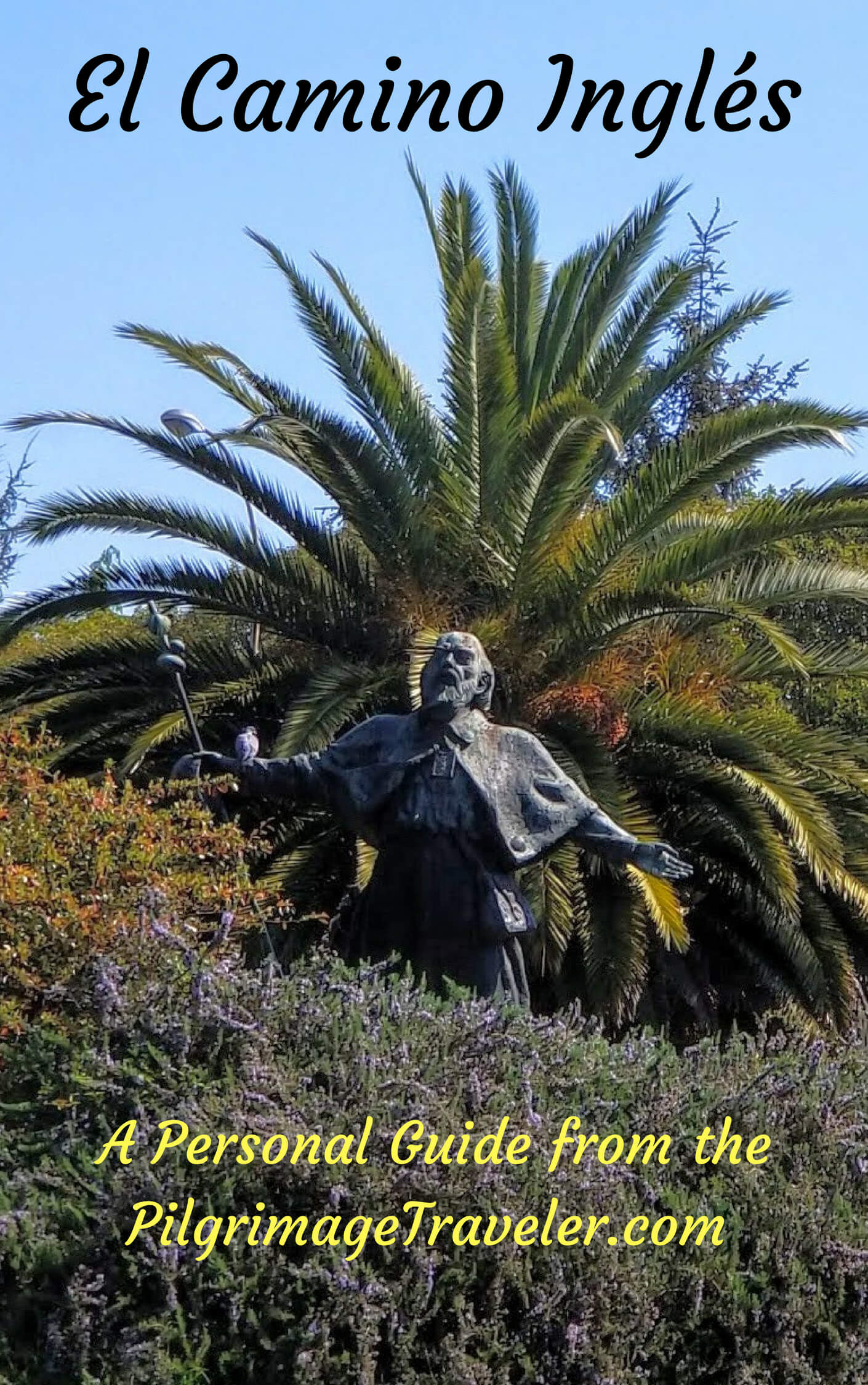
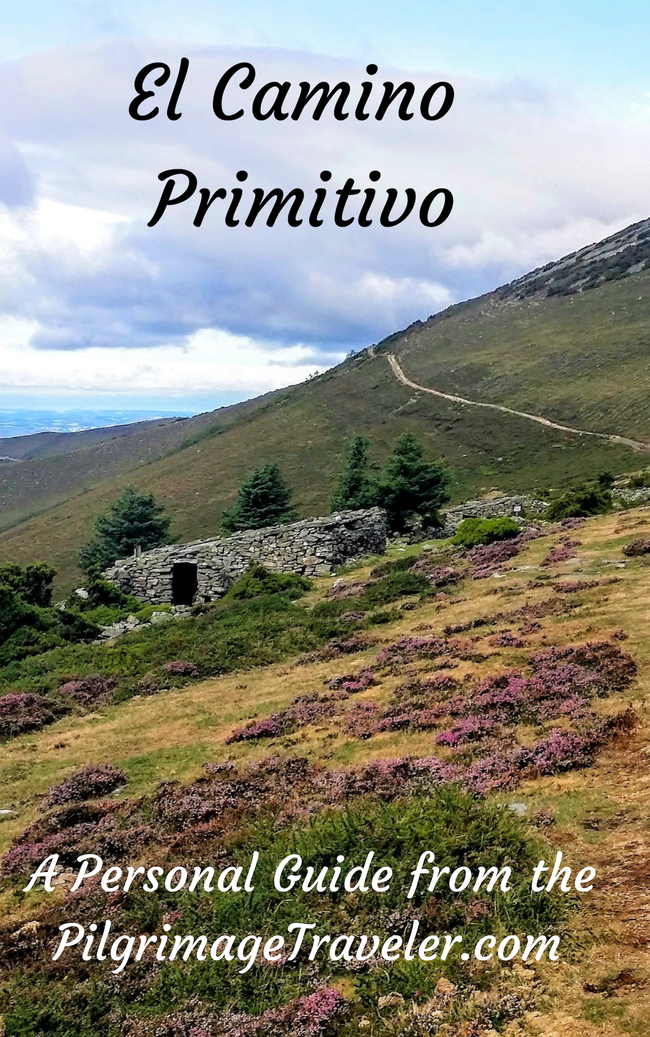

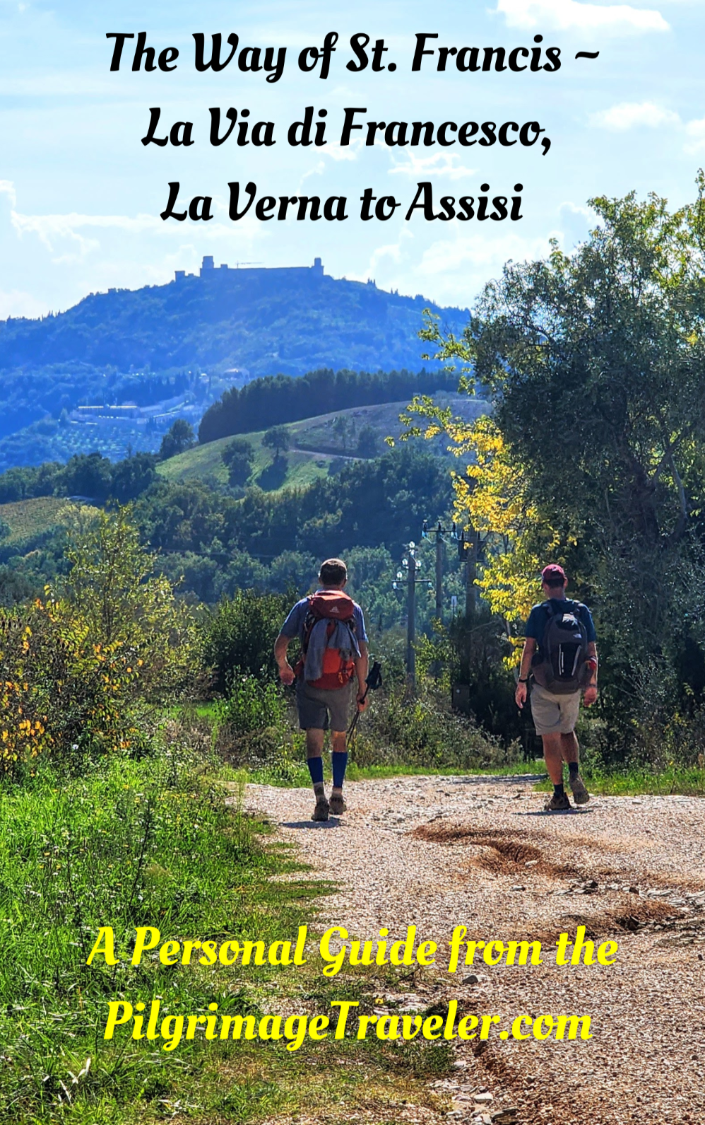

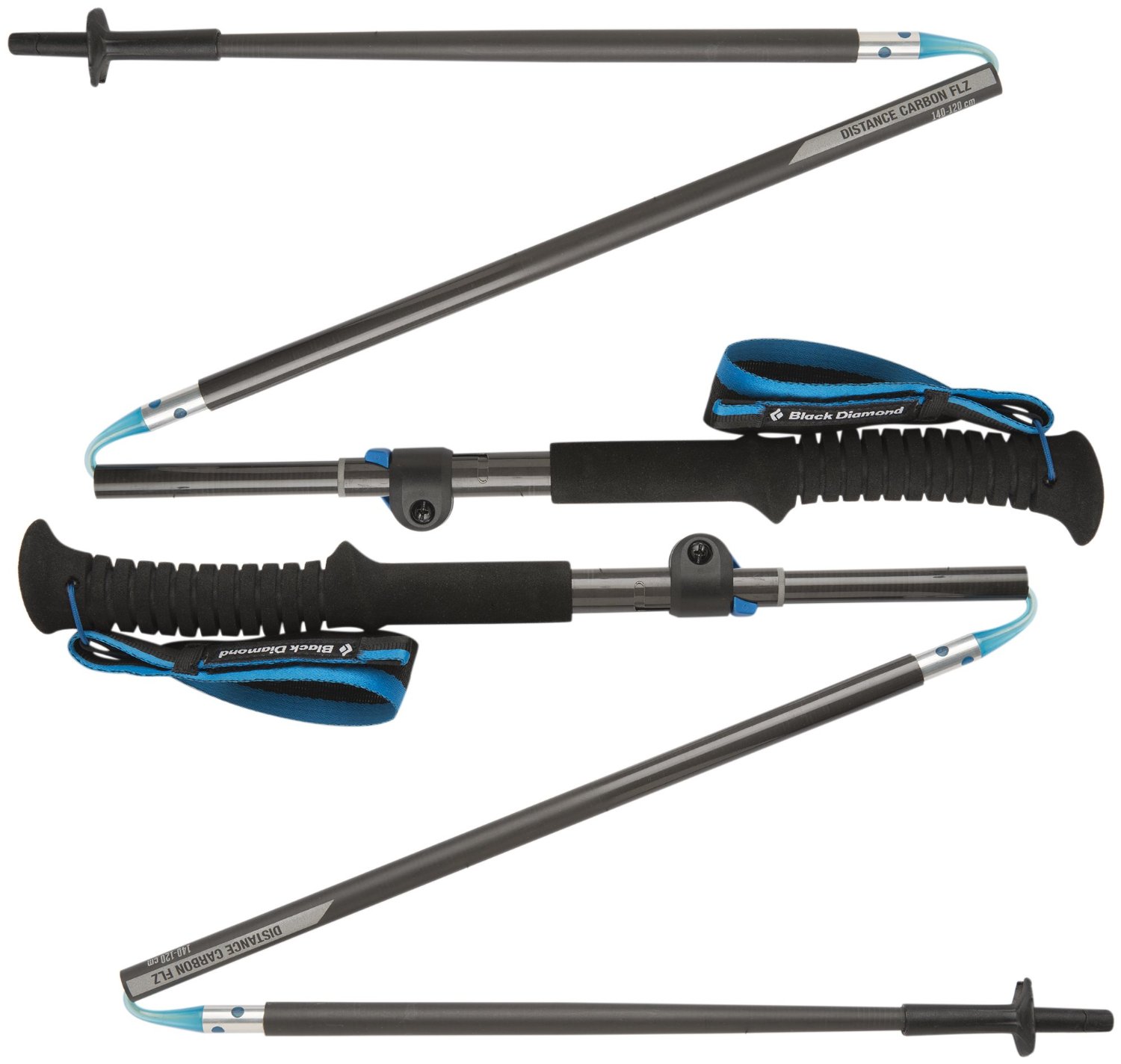


Your Opinion Matters! Comments
Have you had a similar experience, have some advice to give, or have something else you'd like to share? We would love to hear from you! Please leave us a comment in the box below.